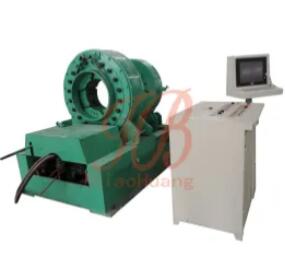Dec. 20, 2024
The pipe bucking machine is a crucial piece of equipment in industries like oil and gas, construction, and manufacturing. To ensure you select the right machine for your needs, it’s important to evaluate specific features that enhance performance and efficiency. This guide highlights 7 essential features to consider when choosing a pipe bucking machine, providing insights from industry experts to help you make an informed decision.
Durability is a top priority for any industrial equipment, and pipe bucking machines are no exception. These machines are often exposed to tough working conditions, so their build quality must be robust. According to mechanical engineer Rachel Hughes, “Investing in a machine with a sturdy frame and high-grade components ensures longevity and reliability.” Look for features like corrosion-resistant materials and heavy-duty frames.
Different projects require machines capable of handling specific pipe sizes. Ensure the bucking machine you choose accommodates the pipe dimensions you frequently work with. Industry veteran Tom Lewis advises, “Selecting a versatile machine that can handle a range of pipe diameters increases its utility across multiple projects.” Common capacities include:
Explore more:Small-diameter pipes for residential use
Medium-diameter pipes for industrial settings
Large-diameter pipes for oil and gas pipelines
Precise torque control is critical for ensuring tight and secure connections without damaging the pipe or threads. “Torque accuracy can make or break the success of your operation,” notes technician Steve Carter. Look for machines with adjustable torque settings and digital displays for real-time monitoring.
Automation features can significantly enhance the productivity of your operations. Automated systems reduce manual intervention, improving speed and accuracy. Industrial automation specialist Lisa Gomez shares, “Machines with automated clamping and rotating mechanisms save time and minimize human error, especially in large-scale projects.” Consider features like programmable settings and remote control options.

Safety should never be compromised. High-quality pipe bucking machines come equipped with safety measures to protect operators. Features to look for include emergency stop buttons, overload protection, and ergonomic designs. Safety consultant Mark Lee emphasizes, “A machine with comprehensive safety features not only protects workers but also prevents costly downtime due to accidents.”
For industries requiring frequent equipment relocation, portability is a key consideration. Lightweight designs, integrated wheels, and compact sizes make it easier to transport and position the machine. “Ease of use and portability are critical for teams working in remote locations,” says field engineer Sarah Collins.
A machine with minimal maintenance needs ensures smooth, uninterrupted operations. Choose models with user-friendly maintenance features like easily accessible components and self-lubricating parts. Maintenance specialist Daniel Brown advises, “Regular upkeep is vital, but machines designed with maintenance in mind reduce overall costs and extend lifespan.”
By considering these 7 essential features, you can ensure the pipe bucking machine you choose meets your operational requirements while delivering long-term value. With insights from industry experts and a clear understanding of your needs, selecting the right equipment becomes a straightforward process.
Explore more:158
0
0
All Comments (0)
Previous: 10 Essential Facts About Bucking Machines Every Buyer Should Know
Next: None
Related Articles
If you are interested in sending in a Guest Blogger Submission,welcome to write for us!
Comments